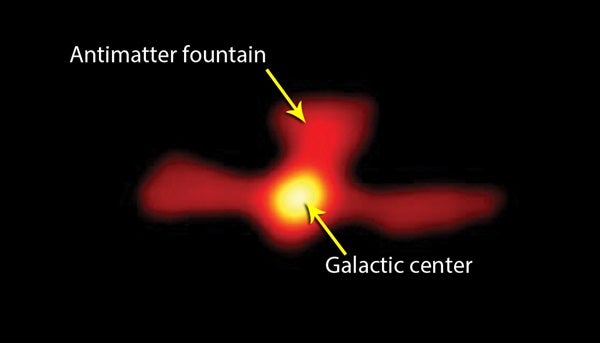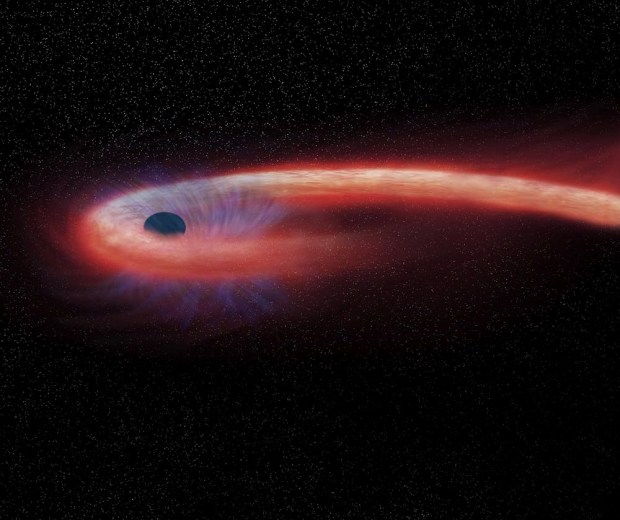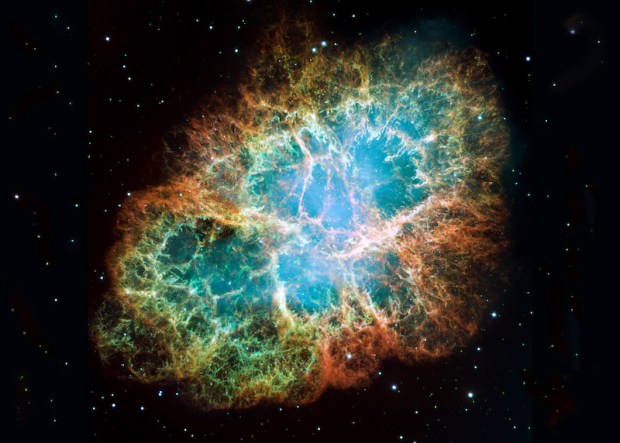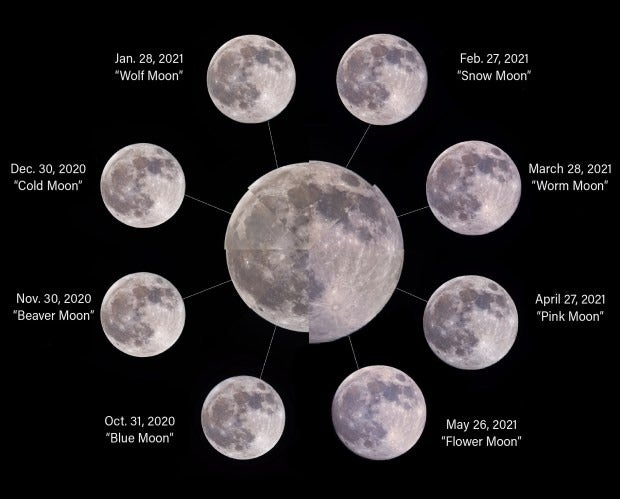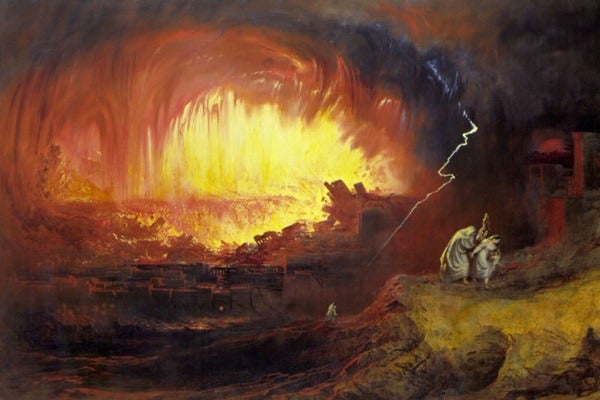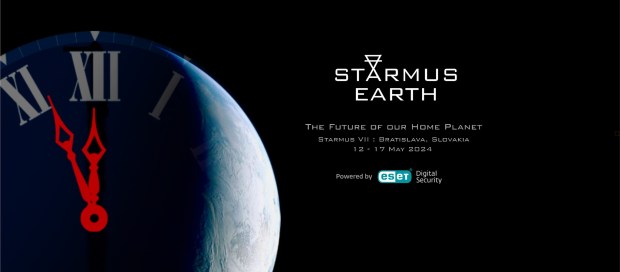In 1928, the shy, brilliant physicist Paul Dirac predicted the existence of antimatter. When it was actually discovered 7 years later, Dirac should have become a household name. But his yearning to avoid publicity — he almost turned down the Nobel Prize — discouraged media attention, and he’s known today only among science geeks.
Antimatter has the same appearance and behavior as ordinary matter. An antimatter Sun would look just like our normal one, and even spectroscopic analysis couldn’t tell them apart. But let an antimatter object touch anything made of conventional matter, and both would vanish in a violent flash.
Unlike most exotic particles and objects that live in the “weird section” of the modern cosmological zoo, antimatter is stone simple to understand. It’s merely ordinary matter with all of its electrical charges reversed. An anti-atom’s nucleus, for instance, is negative instead of positive. And the electrons orbiting it have a positive charge instead of negative, so we therefore call them positrons.
We long ago learned how to create antimatter positrons, thereby moving them from the sci-fi world to the high-tech marketplace. Positrons can create exquisite noninvasive images of the human body: They’re the “P” in a medical PET scan.
Just because antimatter is logically simple doesn’t rob it of mystery. Every version of the Big Bang theory says that equal amounts of matter and antimatter should have been created 13.7 billion years ago. Yet somehow we find ourselves in a matter-dominated universe. What happened to all the potential anti-planets, anti-oceans, and antipasto? Currently, the best explanation is that — contrary to long-held theory stating nature shows no preference for one thing over another — we’ve observed a tiny bias in particle-antiparticle events, and matter appears slightly favored.
It’s a good thing, too. A universe with a lot of antimatter would be a dangerous place. No explosion is more powerful than when matter and antimatter meet. It’s a 100 percent E=mc² conversion of the masses of both objects. If a 1-gram pencil eraser touched an equivalent anti-eraser, the resulting explosion would release two billion trillion ergs of energy — enough to light every bulb in the United States for 10 days. Ounce for ounce, antimatter is 143 times more energy-potent than the Sun’s fusion furnace or an exploding H-bomb.
Although a peek into the night sky offers no way of knowing whether a particular star is made of matter or antimatter, there are good reasons to believe that ours is a matter-based neighborhood in a matter-based galaxy. The explosive contact between matter and antimatter produces gamma rays with a distinctive energy signature of 511,000 electron volts. Thus, if any antimatter fringe material contacted ordinary particles, they’d produce unique energy halos.
These were not observed — at least not until 1997. That’s when the Compton Gamma Ray Observatory discovered positron geysers right here in our galaxy. This frenzied energy from the Milky Way’s center extends for 3,500 light-years, and matter-antimatter collisions definitely caused the violent gamma-ray emissions. But what could be the source of these positrons?
Could some unknown black hole be creating them? Or colliding neutron stars? Whatever it is, it’s doing an efficient job because 10 million trillion trillion trillion positrons encounter matter and are being converted to energy each second. (In the time it takes you to read this sentence, about 200 billion tons of positrons in the Milky Way’s central bulge will be annihilated.) Some 500 trillion tons of matter are involved in this process each day.
But where is this antimatter factory? There is no source of activity visible to our telescopes or detectors. Since positrons in the vacuum of space live for millions of years, they might come from an old supernova, or lots of them — maybe from a long-ago era when our galaxy’s central bulge continually exploded like a fireworks finale on the Fourth of July. Or perhaps it originates from some kind of black hole antimatter production line.
Other “usual suspects” that scientists have searched for and later eliminated include pulsars, quasars, rich star-forming clusters, and cannibalized satellite galaxies. Also crossed off the list are massive stars and cosmic-ray interactions. In each case, there seems no way to create so many positrons, let alone transport them so far from their birthplace.
The problem is not merely one of genesis, but how to explain what’s hurling 15 billion tons of positrons per
second like water spray thousands of light-years above the galactic plane. The most intriguing idea concocted by theorists (some would say it’s more like a wishful hope) is that dark matter, whose nature is still mysterious, might generate the antimatter through some as-yet-unknown interaction.
Translation: No one has a clue.
The nonstop antimatter fountain streaming from the Milky Way’s center, and the enigma of its origin, remain one of the universe’s truly strangest entities.
Too bad Paul Dirac is not around to shyly enjoy it.


